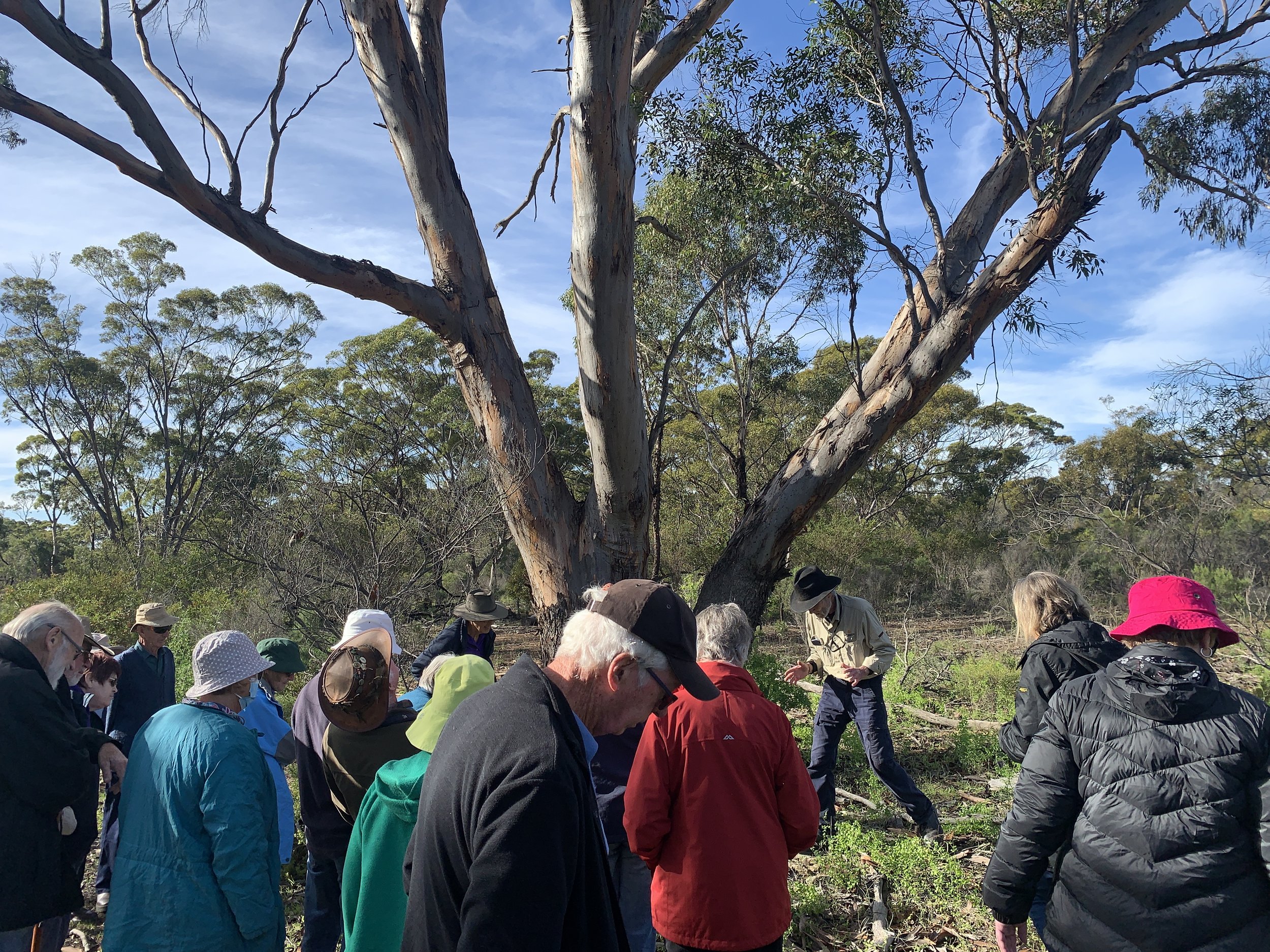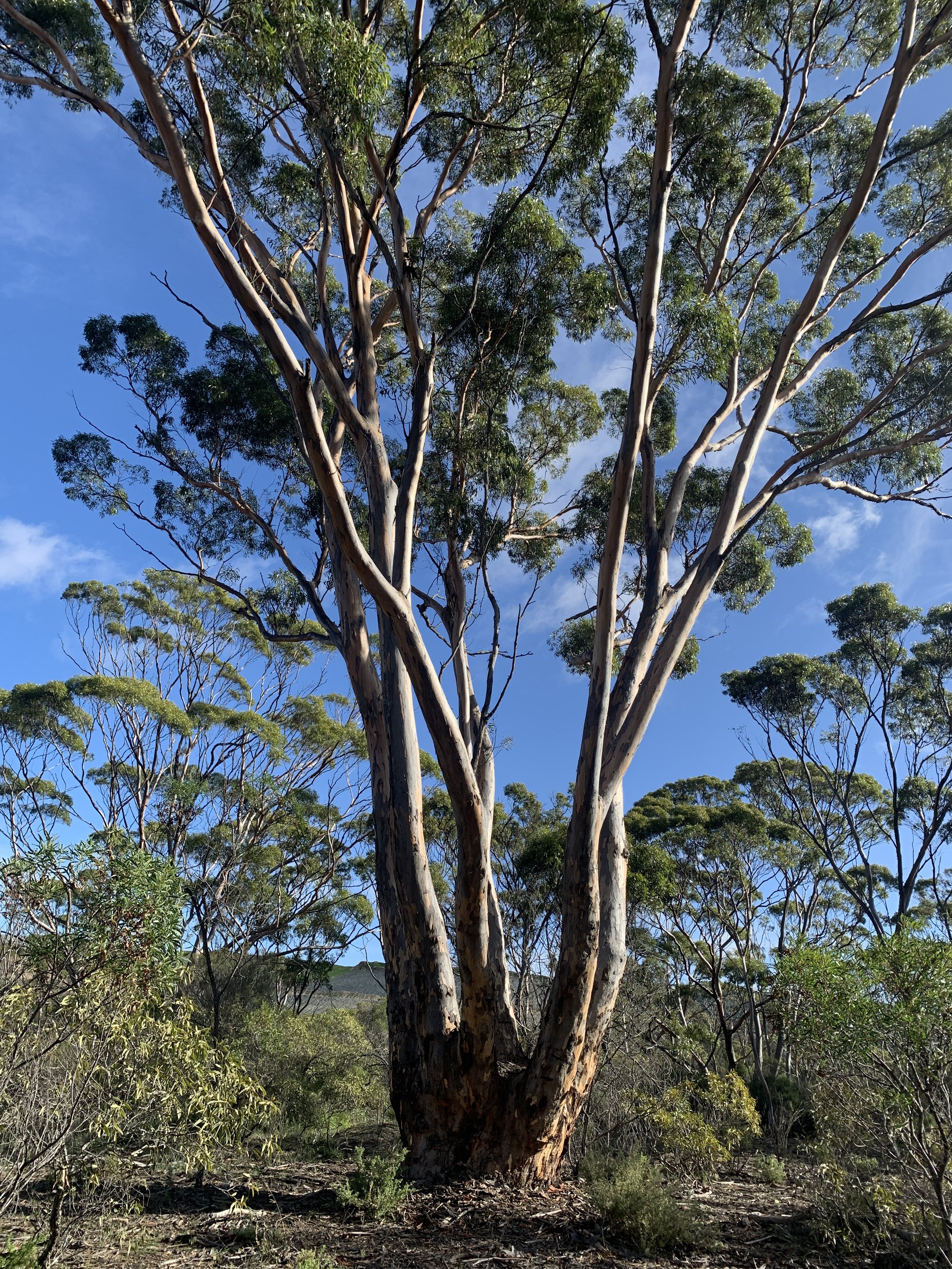Rural Utopias Residency: Sarah Rodigari in Ravensthorpe #4
Sarah Rodigari is currently working with the community of Ravensthorpe. This work forms part of one of Spaced’s current programs, Rural Utopias.
Sarah Rodigari is an artist whose practice addresses the social and political potential of art. Her work is site responsive, employing, durational live action, improvisation, and dialogical methodologies to produce text-based performance and installations.
Here, Sarah shares an update from Ravensthorpe.
The Ravensthorpe Historical Society Magical Mystery Tour
In Ravensthorpe the local historical society play an integral part in how the shire is remembered, experienced, and imagined by those lucky enough to live here, as well as by visitors, such as me. A unique feature of this historical society is that much of what is recorded has also been experienced by its members. To learn about a place through local knowledge and lived experience is a rare opportunity.
Earlier this year, I attended the Ravensthorpe Historical Society Magical Mystery Tour. This day encompassed a visit to four sites. Hawkes Nest, Cattlin Copper Mine, The Ravensthorpe Railway and the old Ravensthorpe Cemetery. The tour offered a concise history of industrialisation, predominately told through ebbs and flow of mining and farming since white colonial-settlers arrived in 1892. Each site visit was introduced by a member of the Historical Society, Andy Chapman, Ann Williams, with additional commentary by Robert and Enid. The rest of us were like a chorus, enthusiastically chiming in with, questions, opinions and counter narratives making the day a rewarding experience of collective storytelling.
Hawk’s Nest
The day began with a visit to Hawk’s Nest where between 1899 -1901 miners arrived to set up camp in search of gold. As we walked amongst salmon gums whose age, and relationship to land pre-date colonisation, we looked over remnants of the baker’s cottage and guest house. We stopped where the mysterious blacksmith, once lived and worked. In a small community where every white settler and their lineage seems to be traceable, it seemed bizarre that such a central and import figure in the development of the camp had disappeared. Who was the blacksmith? If you know, please contact the historical society. Andy, our guide, pointed to a large salmon gum with multiple thick trunks. Apparently, it was common practice in gold fields to cut down trees for timber, pit props and boiler fuel. Originally this salmon gum would have had one trunk. Because of being cut down some one hundred and fifty years ago, it grew back stronger, healthier, and sprouted multiple new trunks. I’d like to think that colonial settlers knew that a regularly coppiced tree would never die of old age, but history tells us this was probably not the case.
Cattlin Copper Mine
We then visited the Cattlin Copper Mine (1899 - 1919, 1958 - 1972), where we gathered round to admire what Andy referred to as an “almost architecturally elegant head frame”. In comparison to today’s open pits, the mine looked small, however Andy reassured me that the mine bore a 1000 feet (304.8 meters) deep hole and that between 1958 – 1972 it was a major producer of copper in Western Australia.
Along the way we casually stumbled upon a one-hundred-year-old green bottle, broken pieces of fine crockery and a large piece of iron, all without digging. Did this really happen? Were these effortless archaeological findings true? The city slicker in me called out “conspiracy”, but all the sites we visited remain relatively untouched since they were abandoned, as Andy points outs, 150 odd years is a mere blink of time in the history of this land, so yes, it did and it was, magical!
Ravensthorpe Railway
The Ravensthorpe Railway (1909-1935) was built to speed up the process of supply between the port in Mary Ann Haven (Hopetoun) and the rapid mining growth in the Philips River Goldfields (Ravensthorpe). Ann Williams tells us that prior to this, necessities such as, mail, water, firewood, charcoal, farming products and mining supplies were crated from the port in carts pulled by twenty-one donkeys, this is almost double the amount of Santa’s reindeers and significantly slower, not that one should compare donkeys with reindeers but the animal power, distance and time frame bear consideration. It’s hard to imagine that the now 40-odd-minute drive once took two to three days. Through the conversations I am reminded that the position of many roads across this country began as Indigenous walking tracks, I wondered if this was the case here.
Old Ravensthorpe Cemetery
After lunch, we visited the Old Ravensthorpe Cemetery, where Andy observes that in cemeteries, we only see a small part of a much larger archive. What we seldom learn from a headstone is where a person dies or who’s connected to who via the wider branches of their coppiced salmon gum family trees. The story goes that in the 1920s undertakers struck granite and despite being a mining town with fractured, turbulent soil and a good grasp of explosives, a proposal was made, and it relocated to its current location. The old Ravensthorpe Cemetery was restored in the 1990s, you can now see a row of graves, and a memorial stone listing the names of people thought to be buried there (original records were destroyed by a fire in 1916). To the sides of the cemetery are burial sites for lesser mortals: those who were not baptised or died of ‘unnatural’ causes. Despite customs and practices, burial of the dead is a common thread across human cultures. To one side is a memorial cemetery for First Nations People. In this space our conversation briefly touches on the history of the Noongar people, the traditional custodians of this land, their massacre, exodus and continuing absence. We noted that this loss of connection to a culture and community that carries and deep understanding of this land occurs alongside the development of the sites we visited. The massacre memorial site, Kukenarup was opened in 2015, with the support of the Ravensthorpe Historical Society, BHP and the Department of Aboriginal Affairs.
The Ravensthorpe Historical Society work with a passionate zeal to conserve a history of this area. In the short time that I’ve been here, a great deal of my understanding and learning about this place has come through their extensive archive, publications and generous sharing of the information they’re gathered. Because of this, I know more about the history of this area than I do about my own locality back in Sydney. Through this tour I have come to understand a history of Ravensthorpe through its mining, agriculture; turbulent soil; unique biosphere and the enduring strength and beauty of the coppiced salmon gum. I wonder what the next tour might entail



